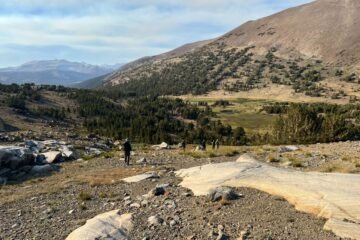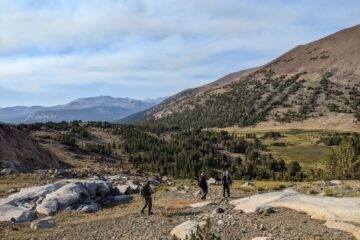Get inspired to discover Yosemite-area spring flowers in this guest post from David Lukas, a Yosemite Conservancy naturalist and author of Sierra Nevada Birds, Language Making Nature and many other books.
Lifting, exultant, every kingly cup,
Brimmed with the golden vintage of the sun.
— Ina Coolbrith (from “Copa De Oro, the California Poppy”)
All springtime approaches into Yosemite lead you through the Sierra Nevada foothills, which welcome you into the mountains with spectacular flower displays. It’s worth taking time to stop on your way in to admire the woods, fields, and slopes ablaze with rainbows of color, particularly if you’re approaching the park on Highway 140 along the Merced River canyon.
One of the first plants you might notice is redbud, which blooms in clouds of flamboyant red-pink flowers. With their feet in cool, wet soils near canyon bottoms and watercourses, these large, diffusely rounded shrubs are especially common on the banks of the Merced River, and are easily visible along the shoulders of the highway. Take advantage of the roadside viewpoints to pull over and pull out your camera — against its backdrop of flowing water and rocky hillsides, redbud makes an ideal photo subject.
Redbud isn’t the only attraction, however. Let your eyes sweep upward — past slopes marbled with purple brodiaeas, pale baby blue eyes, lavender-tinted globe lilies, and yellow-orange fiddlenecks — to distant hillsides flaming with carpets of California poppies.
Few flowers have sparked the imagination of Californians as much as the poppy, a plant so beloved that it was proclaimed the official state flower in 1903. Nicknamed copa d’oro (“cup of gold”) or la amapola (“flame thrower”) for the ways they capture the sun and burn it into your eyes, poppies present the purest tones of vibrant living orange you’re ever likely to see.
These flowers are very rich in carotenoids (the plant pigments also present in tomatoes and autumn leaves) and are reportedly somewhat sweet. They don’t have any nectar, but their abundant supply of bright orange pollen attracts bees, butterflies, hover flies and other pollinators. These flowers carefully safeguard their pollen supply, remaining closed on cloudy or windy days in order to protect the precious grains for days when pollinators are out flying around.
Although you can find poppies in bloom throughout the summer, each individual flower only lingers about five days before dropping its delicate petals. Over the course of five weeks, a pollinated poppy develops into a long capsule that will split open and explosively cast its seeds up to six feet away.
We’ve had an exceptionally wet winter and spring in Yosemite and the foothills, so the flowers should be vibrant and healthy this year. Lots of rain doesn’t necessarily mean more blooms, though: The number of seeds in the soil is more closely tied to prior year conditions than to current conditions. However, an abundance of healthy flowers this year means lots of seeds that will become flowers next year. In short, come to see the colorful displays this year — and come back in 2018 to see even more flowers!
Want to see wildflowers through a naturalist’s lens? Keep an eye on our Outdoor Adventures calendar, or create a Custom Adventure!



